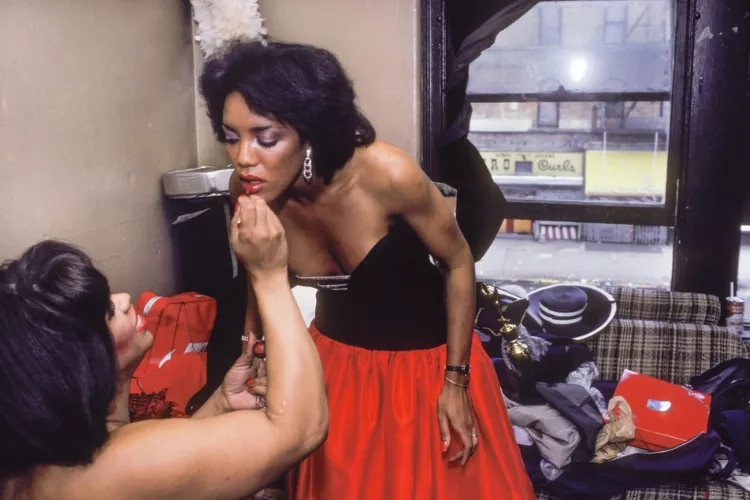
Fashion is Dead, Long Live Fashion!
Such would be the statement –and trajectory– were we clothes-obsessed, sustainability-loving hell-raisers and do-gooders to succeed in dismantling the enormous, interconnected (by threads large and small, in every color) industrial complex known as the Fashion Industry.
It is also the prevailing thesis of phase-out and renewal, i.e. hope, that famed Wardrobe Crisis podcast host, sustainable fashion advocate, filmmaker, author, and presenter Clare Press (you may know her better as @MrsPress) explores and expounds upon in her latest book, her fourth, Wear Next, Fashioning The Future.
ON CLOTHES, LOST AND FOUND
Harper’s Bazaar—still-esteemed, indefatigable champion of unaffordable-for-most luxury consumption in excess—calls it “an optimistic look at fashion’s roadmap for the future.” (And I have to pessimistically note that the last time I read Bazaar, there wasn’t much particular prioritizing of any of the ideals that Press champions in her written oeuvre.)
Wear Next is a presentation of alternative examples both happening and in progress. It’s an explanatory overview of ongoing alternatives to business as we know it. And could act as a sort of guidebook for fashion companies looking to implement any number of conscious fashion innovations in their current business models. Knowing what we know about fashion’s carbon footprint and humanitarian offenses, it’s a compilation of answers to the question of “Where next?” for our beloved industry. I’ll call it an atlas, not to be shrugged off, for how to put community before profit, beauty (in its truest forms) before trend, and “craft” before “product.”
FROM WARDROBE CRISIS TO WARDROBE UNDER CONTROL
Press breaks this roadmap down into bucket categories of solutions: Conscious, Fair, Slow, Even faster (e.g. 3D printing, and other DTC or made-to-measure options that help reduce overproduction waste), Upcycled, Community, Less, Local, Global, Traceable, Repaired, Shared, Regenerative, Biointelligent, Robotic, and Digital.
Her supporting examples are myriad. We marvel at the plethora of progress made since the push for a more sustainable, ethical fashion industry has gained more traction. Renewcell in Sweden developed a way to chemically recycle used post-consumer cotton into like-new cotton. (Well, and then filed for bankruptcy, but the hope thrives!) The Or Foundation in Ghana has raised much awareness of the secondhand textile trade’s secret of “waste colonialism” practices. So much so that Uganda felt empowered to re-up a ban on used clothes imports while Shein, Chinese fast fashion conglomerate and significant perpetrator of secondhand waste, pledged $15 million to the Accra-based nonprofit’s Extended Producer Responsibility demands. A slow but steady wave of government regulation is being put in place to quicken if not ensure the process of undoing fashion’s various harms.
Press is trying to emphasize that we aren’t stuck in a waiting game. Her recap of the past decade’s accomplishments in practice and zeitgeist is therefore a fun-to-read catch-all for the cries and the decries of the sustainable fashion niche-cum-norm and the subsequent positive adjustments in modi (that is, moda) operandi that have been and are being made.
Do Not Pass Go
I have particular gratitude for the chapter called Global, in which Press acknowledges what (or who) she terms the “missing piece” in rearranging the jigsaw puzzle that is the fashion industry. I’ll italicize it for clarity and emphasis: “if we turned off the fashion tap tomorrow, what would happen to the garment workers?”
“The beautiful future imagined at the start of this chapter would need to be created with them,” Press writes. She notes how, in Asia, “the fashion workshop of the world, accounting for more than half of global textiles and clothing exports.” The continent’s apparel production sector employs about 60 million workers while providing indirect employment to untallied millions more. She also points out how fashion production in particular helps provide jobs for women. It empowers them to increase their standard of living, as well as that of their families. Unfortunately, the race for cheaper product and shorter lead times has trapped women in poverty wages and vulnerable jobs.
That said, canceling our orders isn’t necessarily the way to go. Sure: on the slow, made-to-measure, upcycled, less, local, repaired, shared, and regenerative fronts, we want to go to mending clubs, save money, hold onto our grandparents’ old things, buy organic. Press highlights some very, very, very, very cool alternatives to being caught in the sheepish cycle of clickbait hoarding that is fast fashion following. Of course, I want to be the English eccentrics Vin and Omi in the Cotswolds, who brush shoulders with Prince Charles and who don’t participate in the rush of High Street just because doing so is mass and therefore uncool. But not everyone has time to source nettles for unique garments, not sell said garments, and still make a living.
Could we make the time? Time will tell.
On the other hand, supporting and maintaining the “industry” part of this fashion industry takedown is still essential.
THINK GLOBAL, ACT GLOBAL
Press cites her meeting with a Bangladeshi garment worker union leader, whose message to consumers is “not to boycott clothing made in Bangladesh.” Silo-ing myself on my own farm, or at least my own bubble of NYC clothing swaps and chic Soho vintage stores, isn’t the bigger solution in which I want to participate. In all my slow fashion buying, secondhand trumping, and polyester-eschewing, I have never been able to villainize H&M in totality. Not just for the simplistic excuse that H&M “employs people.” (I mean, they do.) But because without peoples’ purchases, there is no immediate alternative work for the industry-dependent garment worker. We cannot make progress in better business without first having a business.
The fashion industry is irrevocably intertwined. We just have to make it more collaborative. As a global industry, it’s not just about clothes. It’s always about who makes them. Workers must be not only considered and included in the conversation for change—but brought along in the actions.
Wear Next, acknowledges and espouses this.
FORWARD TO BASICS
No matter what sort of industry restructuring we envision, we must continue to demand, through actual governmental regulation, better workplaces and wages for garment workers.
We can’t close business. What we need next, for readers, then, is a longer unpacking of the essential things we have to get right, and stat.
- Less is a good answer, but too much less might leave people without any work at all. Somehow we have to keep shopping.
- Production of things leads to waste, inevitably. Therefore, achieving effective recycling systems is nonnegotiable.
- We have to pay garment workers and textile recyclers (and textile mills and materials farmers and fabric scientists etc. etc. etc.) ethical, living wages. Big-time sustainable fashion activism team Remake says this will naturally lead to less production. And so we’ve come somewhat full circle. Fully circular? TBD.
To conclude, I’m hot on this Press. Read where we’re going, weep, and reap.
–Anne Elizabeth Whiting
Related Articles






